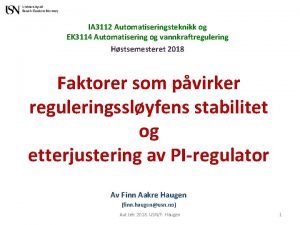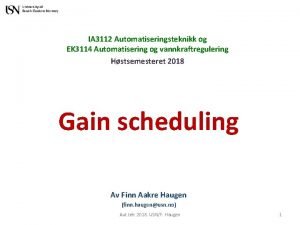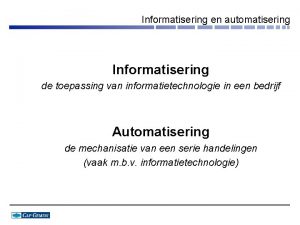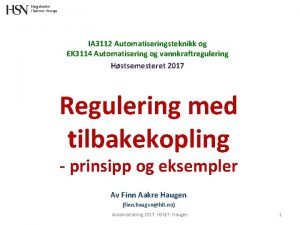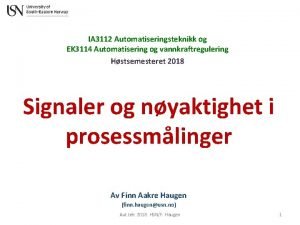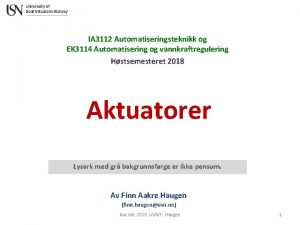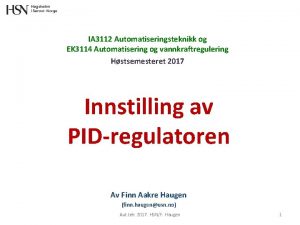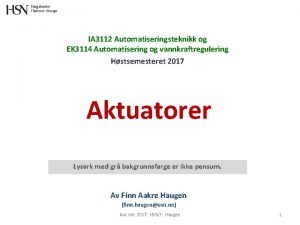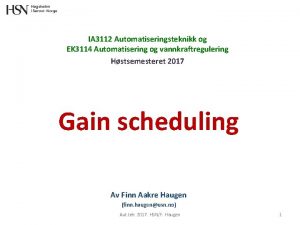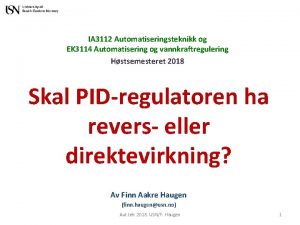IA 3112 Automatiseringsteknikk og EK 3114 Automatisering og










- Slides: 10

IA 3112 Automatiseringsteknikk og EK 3114 Automatisering og vannkraftregulering Høstsemesteret 2018 Gain scheduling Av Finn Aakre Haugen (finn. haugen@usn. no) Aut. tek. 2018. USN/F. Haugen 1

2 Problem: Assume that the dynamic properties of the process to be controlled vary with the operating point. With fixed PID settings, the control system may • get poor stability, or • become sluggish Solutions: • Conservative tuning (good stability, but sluggish control) • Adaptive tuning (optimal settings all the time, i. e. the control system gets good stability and fast control): • Model-based PID parameter adjustment • Gain scheduling based on experiments Here, we concentrate on Gain scheduling. Aut. tek. 2018. USN/F. Haugen 2

3 Control system with controller parameter updating using Gain scheduling: Aut. tek. 2018. USN/F. Haugen 3

4 Gain schedule = Table of sets (here 3) of PID parameter values: PID set 1 PID set 2 PID set 3 Aut. tek. 2018. USN/F. Haugen 4

5 How to interpolate between the tabular values of controller parameters and GS variable? Let's focus on controller gain Kp (the same principles apply to Ti and Td as well). PID set 1 PID set 2 PID set 3 Aut. tek. 2018. USN/F. Haugen 5

6 How to interpolate between the tabular values of controller parameters and GS variable? Aut. tek. 2018. USN/F. Haugen 6

7 An example: Temperature control system where process dynamics varies with flow Aut. tek. 2018. USN/F. Haugen 7

8 In the example: How do process parameters depend on flow? Responses in temperature after 10% step in control signal to heater: Small flow (12 kg/min) Large flow (24 kg/min) Process gain Time constant ~ Inverse of flow Time delay Inverse of flow ~ Aut. tek. 2018. USN/F. Haugen 8

Observations (from previous slide): Process gain ~ Inverse of flow Time constant ~ Inverse of flow Time delay ~ Inverse of flow Implication: When PID controller has fixed parameters: If flow is reduced, the stability of the control loop is reduced. How to maintain stability and speed of the control system despite flow variations? By adjusting the controller parameters based on flow measurement! So, flow is selected as GS variable. Aut. tek. 2018. USN/F. Haugen 9

10 Simulator: Gain scheduling Aut. tek. 2018. USN/F. Haugen 10
